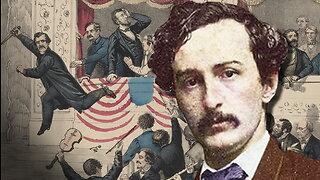Feral Boy Raised By Wolves Was The Real Inspiration Behind Mowgli From "The Jungle Book"
Meet Dina Sanichar, the real life Mowgli, of Jungle Book fame. Dina was discovered, literally following a pack of wolves, by a group of hunters in Uddar Pradesh in 1872. The wolves—and the boy retreated into a den. The hunters smoked out the wolves, and shot them as they emerged. They captured the boy as he escaped the den. He was presumed to be six years old.
The name “Sanichar” is Urdu for “Saturday”; the name was given to him at the mission orphanage where he would be raised by his human wards. Alas for poor Dina, having not grown up around his own kind, he never acquired language. He did, however, make grunting and growling noises. There was another feral—“wild” boy at the orphanage to which Dina did respond.
Rudyard Kipling wrote The Jungle Book in 1894, which was a collection of stories, rather than a single comprehensive novel. Kipling had never explicitly indicated that his Mowgli character was based on Dina Sanichar, although the period in which the character was conceived followed the fostering of the real wild boy by Father Erhardt, Dina Sanichar’s caretaker. Unlike Mowgli, Dina would never fully integrate or shed his wolf-like behavior. Besides never talking like humans do, Dina continued to walk on all fours, and even preferred raw meat. Unlike Mowgli, Dina didn’t willingly abandon the jungle and rise to humanity, but was snatched from the jungle, and at least psychologically and developmentally, there he stayed.
Ironically, Dina readily took to one of the worst of human traits: he became addicted to cigarettes. Maybe cigarettes gave him security, like a child’s blanket, in the strange new world forced upon him. We can imagine the shock of being captured and separated from your family. It must have been a very confusing scene. The aliens are really your own species, but they are the very last things you would consider family. So little do you have in common with other people, that you can’t even convey your needs to them. Our own babies strive constantly to rise to their adult capacity, so at least they know ahead of time what it is we expect of them. But the feral child doesn’t even have that, so behaviors like walking, talking, and dining etiquette aren’t even something they should learn. It’s all very incomprehensible.
After 10 years of living with people, Dina still fell well short of the expectations of his human caretakers. He was also short in stature, barely five feet tall. He was jumpy and anxious. Much of what we know about Dina Sanichar was described through the lens of the imperialism of the time, so terms like “low, pronounced forehead” are interpreted with suspicion. We can imagine that a deficient diet (for people, not wolves) might stunt our growth, but what does a “low, pronounced forehead” mean in the context of not having grown up with humankind? Dina Sanichar’s story would not have a fairy tale happy ending. He passed away from tuberculosis at the estimated age of 29 years old.
-
 11:09
11:09
Ranker
4 years ago $0.01 earnedA Timeline of the Hunt for John Wilkes Booth
145 -
 4:28
4:28
KNXV
3 years agoFLAGS ACROSS AMERICA: Book's co-author shares inspiration behind American history photo book
12 -
 59:00
59:00
Goldylocks Productions
3 years agoInspiration from Spirit Show ~ 24May2021
151 -
 16:19
16:19
RealReaper
18 hours agoThe Acolyte Is Unwatchable
16.3K31 -
 11:29
11:29
Ethical Preparedness
14 hours ago2 EASY Ways: Make Insect Bite & Sting Medicine - Medical Prepping for SHTF - Natural Medicine
21.9K4 -
 15:52
15:52
JoBlo Horror Originals
1 day agoThe Watchers Review: Shyamalans Sure Do Love Their Twists
16.8K2 -
 31:49
31:49
MichaelBisping
1 day agoBISPING & ANIK: Is Conor McGregor INJURED?! | Who Could Replace Him? | What's next for Poirier?
21.4K6 -
 16:00
16:00
Space Ice
19 hours ago'Resident Evil: Retribution' Is So Bad It's Like Looking Into A Mirror - Worst Movie Ever
25.7K15 -
 23:59
23:59
Degenerate Plays
16 hours agoThe Denny's Dictator Impresses Women - Call Of Duty Modern Warfare Remastered : Part 5
19.9K -
 1:13:51
1:13:51
Blue Siesta ASMR
1 day agoASMR Sims 4 Gameplay | New Roommates Move in Tiny House | already dating? 😱 Soft Spoken
14.9K3